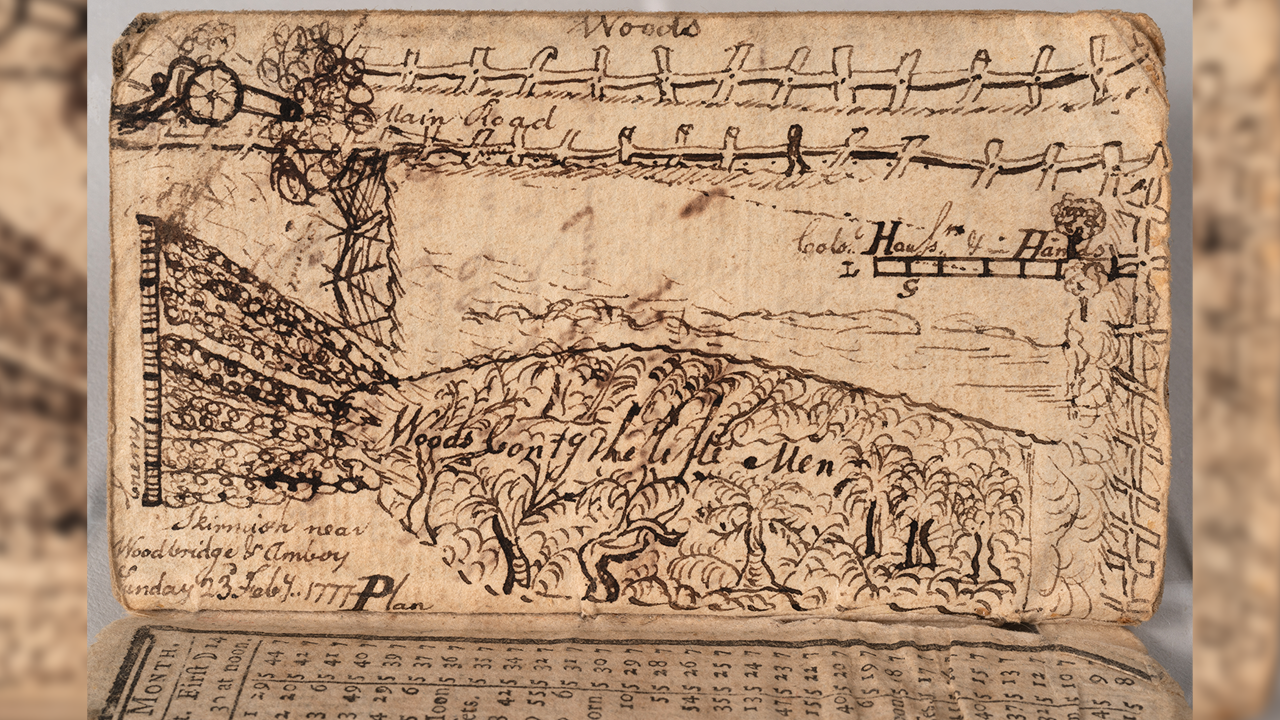Rarely Seen Artifacts: A Glimpse into Revolutionary History
Rare artifacts belonging to an officer in the German Regiment of the Continental Army have been donated to the Museum of the American Revolution in Philadelphia.
A wallet made by Continental Army Lt. Samuel Gerock gives a first-hand account of the battles of Trenton and Princeton as well as lesser-known battles, according to the museum’s press release.
The wallet, crafted from the drumhead of an animal skin drum carried by Gerock’s regiment, contains ink inscriptions, a pocket-sized almanac, and wartime papers that reveal the soldier’s experiences. This personal connection to history reflects a deeply human facet of the Revolutionary War era.
The Legacy of Lt. Samuel Gerock: Soldier and Survivor
Before entering the annals of history, Gerock lived in Baltimore, Maryland, transitioning to New Bern, North Carolina, after the war. His life journey informs the legacy of a soldier striving to rebuild amid the echoes of battle.
Matthew Skic, the museum’s senior curator, shared insightful remarks about Gerock’s papers, noting, “They not only reveal new information regarding the Revolutionary War but also illuminate how veterans documented their service to secure financial assistance.” These artifacts offer a rare glimpse into the daily lives of those who fought for freedom.

Among the items hidden within the wallet is a meticulously sketched account of the Battle of Spanktown, a lesser-known clash that unfolded near Woodbridge, New Jersey, on February 23, 1777. The contrast between the grand narratives of war and the everyday lives of soldiers often goes unnoticed. Yet, it is precisely these personal accounts that breathe life into a seemingly distant past.
In 1818, driven by the need for financial support for his wartime service, Gerock brought these historical documents to a courthouse. This act highlights the ongoing struggles of veterans, whose battles did not end with the signing of treaties. The artifacts remained within the family, eventually making their way to his great-great-great-granddaughter, Nanette Reid Osborne. A woman of conviction, she chose to donate the treasures to the museum as a tribute to her mother.

Reflecting on her decision, Osborne remarked, “I didn’t know that people would find them interesting, but they do. I’m just really happy that we were able to donate them to the museum so as many people as possible can see and learn from them.” Her sentiment resonates powerfully; history should not languish in the confines of a drawer, but should rather live in the hearts and minds of future generations.
The artifacts now proudly occupy a spot in the museum’s second-floor Oneida Indian Nation Atrium, a fitting homage to the widespread sacrifices made by countless individuals during the struggle for independence. Visitors will discover more than just objects; they will encounter the echoes of courage and resilience forged in the crucible of war.
Did you know that during the Revolutionary War, soldiers often became proficient in multiple languages, enhancing their communication skills and fostering camaraderie within diverse regiments? Such interactions add another layer to the rich tapestry of history.




































